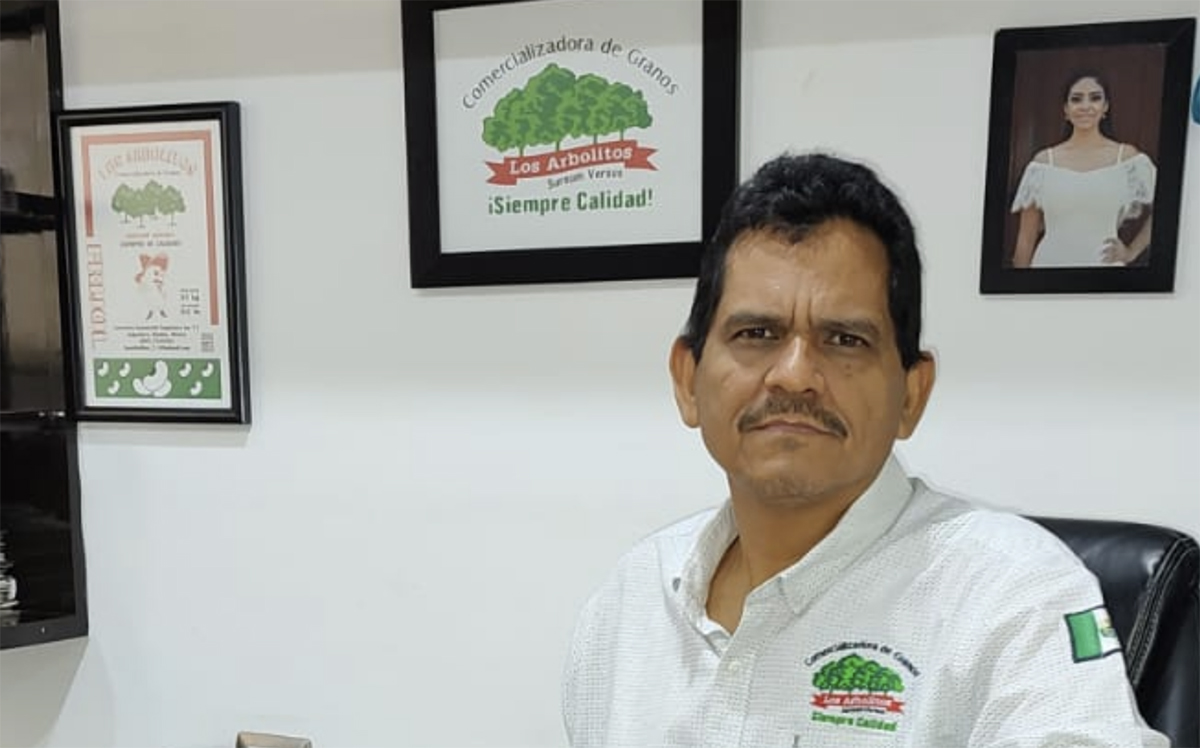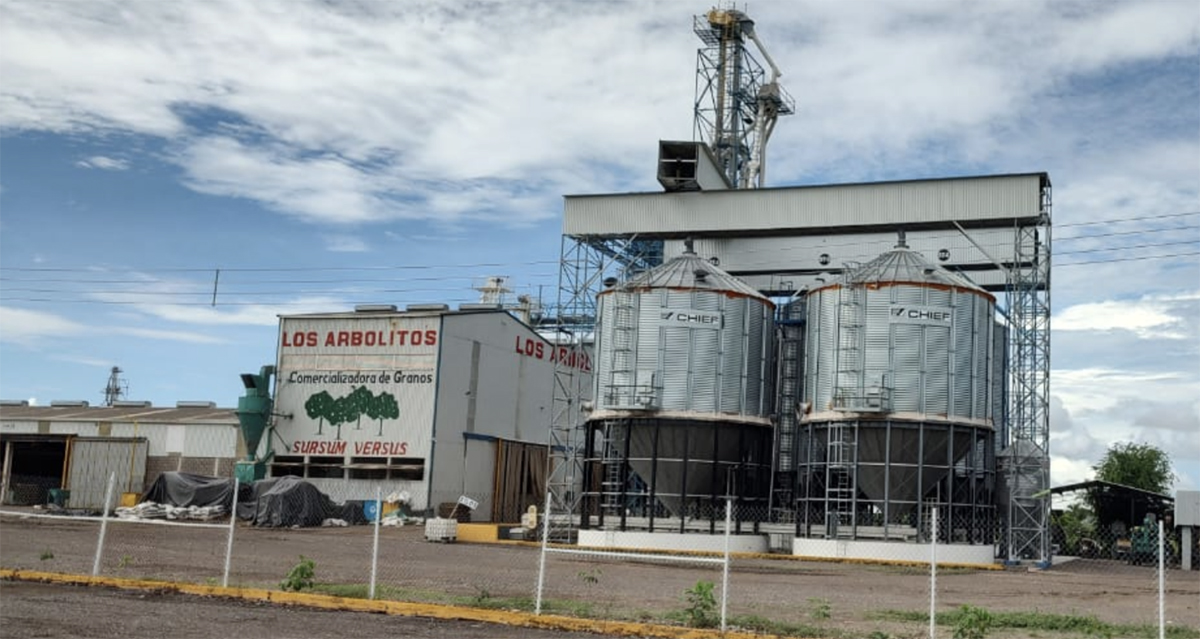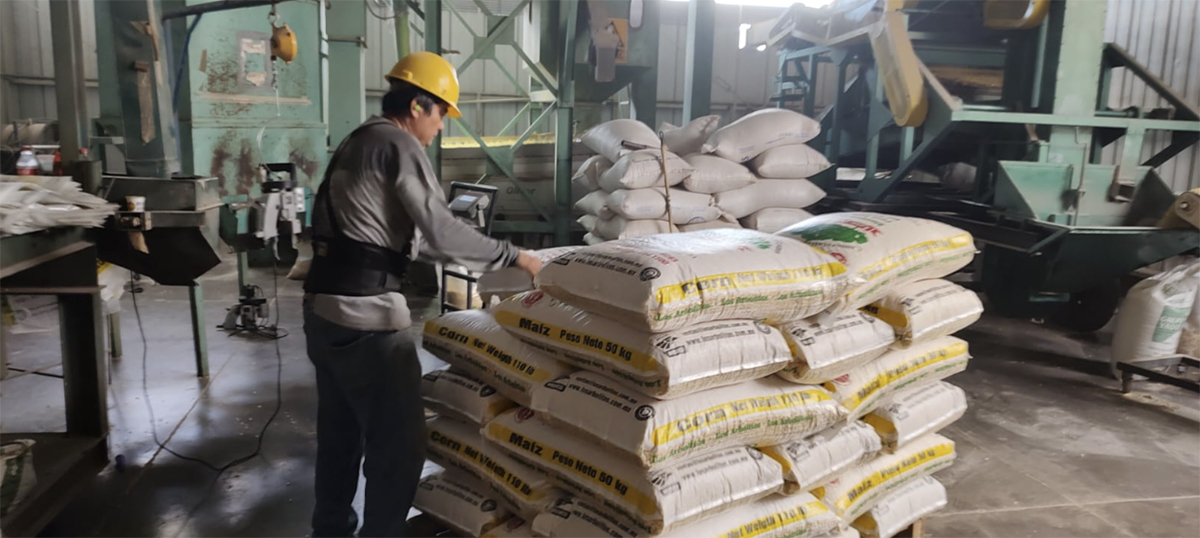September 19, 2022
Cristobal López Diaz, CEO of Los Arbolitos, chatted with Luke Wilkinson about the endangered chickpea and how yellow bean farmers are feeling about stalling returns on their investment.


In the build-up to the GPC Americas Pulses Congress in Cancun this December, we are speaking with pulse traders from all over the Americas to get a picture of the markets moving towards the end of the year.
The Americas Pulses Congress is free for all GPC members. Not a member yet? Register here today!
Well, I'm the CEO of Comercializadora de Granos Los Arbolitos in Sinaloa. The company was started from scratch by my father and we continue to be a family company, run almost entirely by myself and my siblings.
My brother Macario works in buying and logistics, my sister Susana handles the accounting, and my other sister Juani is in charge of international logistics.
We started out harvesting peanuts then selling them in local markets and grocery shops, from there we moved to Culiacán, the capital of Sinaloa, then we started taking produce to Guadalajara and other bigger markets like Leon and Aguascalientes. Clients started to ask: "If you're in Sinaloa, bring us beans! Bring us chickpeas!"
So we did. We moved into pulses, and stopped trading peanuts. Peanuts only have one good season - whilst pulses and grains generally have two. Pulses and grains also gave us a wider range of products that meant we could start trading at a national level with beans and corn.
In the last few years we've eased off a bit on the national market in order to concentrate a little more on trading internationally.
We started out sending containers of oilseeds to Spain, then expanded into chickpeas harvested in Spain from a variety of companies like Canadian grain and ETG.
When we started exporting, we didn't have the economic capacity so the companies brought international clients and we organized the logistics and export of the chickpeas. We took care of our part and they paid us the FOB price.
Since then we've grown a lot and are able to export directly to different countries around the world. The Algerian market is very strong for us and over the last year Latin America has been important but shipping there has become more difficult given that the logistics situation has become more complicated.

Comercializadora de Granos Los Arbolitos Processing Plant, Sinaloa
There have been a lot of changes, for example, Peru used to be an exporter of yellow beans but as their economy has improved they have become importers instead.
With chickpeas, there have been similar changes, like the Russians and Ukrainians changing the way they trade and becoming bigger players in the chickpea market - particularly in small caliber chickpeas.
In the bigger sizes, India wasn't very involved 15 years ago whereas now they very much are.
Yellow beans are still an important product, in fact they are the second most important product for Los Arbolitos - we export them and also sell them nationally. National demand has fallen over recent years because the price of yellow beans is high, so pinto beans have come to replace them as the cheaper option.
In terms of inventory this year, I think we are going to have enough to last through to the new harvest in January/February. There isn't a great deal of optimism among producers at the moment because the prices don't allow them to get back their investment. They’ve had a couple of years now with low prices. In my opinion, the yellow bean price should be higher.
Two months ago (as of August 12) producers were selling their yellow beans at more or less the price of production, so it wasn't profitable for them. In the last 20 days in Mexico City they'll cost you 26/27/28 pesos ($1.31/.36/.41 as of above date) per kilo, which is a price that seems acceptable, and profitable enough for the producer.
I'll give you an example: for us to send a container to Callao in Peru used to cost $65, and right now it costs $150. You speak with your client in Callao and they are shocked at the prices. You offer them chickpeas at 9.5mm at $1480 a container but they'll tell you that Canada is offering them a mix of 75% 8mm and 25% of 9mm at $1300.
You can't do it for them at that price, so they go for something cheaper - which I understand!
While I don't think the Canadian product is quite as good as our Mexican one, it is still a fine product.
Fortunately a large part has been taken by the national market, as last year our inventory wasn't that big nor were the seedings.
I had been thinking that the market was going to improve last year but then it didn't. This year it hasn't either due to the logistical issues.
All of the traders have been complaining because there were no containers, or in my case because I needed to go to Manzanillo where I spend $60 in logistics instead of $35 or $40 that I used to at Mazatlan. Going to Manzanillo is more expensive for me. It all makes you less competitive.

Inside the Processing Plant
It had been becoming quite difficult to sell chickpeas, but eventually last year the 12 or 13 mm chickpeas began to sell, but slowly. If I hadn't had a possibility to send to Algeria, I might've had more of a fight on my hands to market my chickpeas.
Some things are a little difficult to understand, because India right now offers 12 mm chickpeas at around $1500 a ton in certain European and African ports and here in Mexico we’re asking for that kind of price for just an FOB from Mazatlan. We’re a long way from being able to offer the same kind of prices as India.
It seems to me that, whilst most grains and pulses prices have risen, chickpeas stay more or less the same. If you look at lentils, the prices have gone up a lot, as have wheat and corn.
The prices in India are shockingly low. Diesel has gone up by 30-40 percent and fertilizer by 100% to 200%, depending on what you get. For example, ammonia used to cost 10,000 pesos per ton but peaked at one point at 30,000 pesos. Now you can get it between 23 and 25 because things have come down a little, but it's still double what it was before.
Up until now, I don't think we've seen all these costs reflected in the price of all grains and pulses, especially in the case of chickpeas.
In spite of all that, there is something interesting happening in the national market of small size chickpeas. 8 and 8 1/2 mm chickpeas, what we call ‘Granillo’, are so in demand that, in the market in Mexico City, they’re going to cost you $1150 a tonne. It's the cheapest chickpea product available in Mexico, and right now there's barely any left with four or five months still to go until a new harvest.
I think it's one of the products that could potentially begin to disappear, or drop to drastically lower levels if export prices don't reach a level that allows producers to cover their costs and have some profit leftover.
The prices we’ve had lately don’t help the producer. Five years ago, producers were really enjoying themselves with the high prices we had but now they’ve had a couple of years with bad ones.
I think they're really useful; they let you see and speak to other traders, focus on projections of the markets – for me that's the most important thing: seeing the statistics of the market so you can predict how they're going to behave. That allows me to inform my clients so that they can make their own decisions.
I think our industry still lacks a lot of information regarding crop projections. Lots of people ask me for my opinions on the markets and I try to be as honest as I can – sometimes I say things that go against my own financial interests!
I think the Americas Pulses Congress is a great forum for building our commercial and personal relationships, as well as improving our knowledge. I think it's definitely worth going.
Disclaimer: The opinions or views expressed in this publication are those of the authors or quoted persons. They do not purport to reflect the opinions or views of the Global Pulse Confederation or its members.